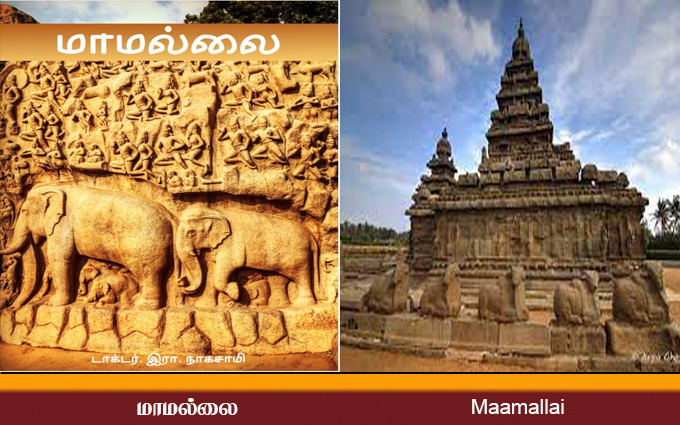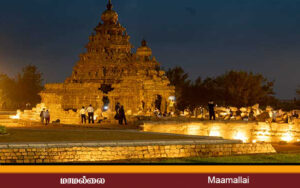

Serving as the director of the Tamil Nadu Government Archaeology Department in 1968,

Serving as the director of the Tamil Nadu Government Archaeology Department in 1968, R. Nagasamy details the following in his book ‘Mamallai.’ There exists a disparity of opinions among researchers regarding the Pallavas’ identity. In North India, they believe the individuals known as Pahalavas are thought to have migrated from the north, while there’s other beliefs that the Pallavas’ came from an island called Manipallavam.
Others contend that during the first and third centuries AD, the Dakshina region was governed by Satavahana kings over successive centuries. The numerous representatives, starting with their arrival in the region, played pivotal roles in the eventual establishment of autonomy. Supporting this claim is the presence of evidence in Kanchipuram, situated to the south in Tamil Nādu, Tamilakam. Inscriptions from the early Pallavas are exclusively written in the Bhagatha (pāgadam) language, with their presence extending to the modern-day Telugu and Kannada regions. Their titles, exemplified by Pakhapiduku, are suggest a strong link to Tamilakam; the modern-day Telugu and Kannada regions.

The Pallavas are identified as the inhabitants of Tamil Nadu, Tamilakam, and certain scholars’ postulate that their lineage can be traced back to the Tirayas who governed during the Sangam period. They present the following justifications: the Tirayas are associated with the name Thondaimaan, and this appellation is likewise evident for the Pallavas in both inscriptions and literary works. Thondaiman Ilanthirayan and Vengadatha Anda shared a close familial relationship and according to Sangha scriptures, Bulli (Kalwar Goman Bulli )is documented as the offspring of Kalvar. In contemporary times, members of the Kallar clans continue to refer to themselves as Thondaimaans. With the title; “Kaduvetti” is more distinctly associated with the Pallavas. Even to this day, the leaders of the Kallar clan are acknowledged as kaduvettis. This highlights the recognized link between the Pallavars and the Kallar clan. As the ethnic language of the Pallavas, Tamil took precedence, while the strategic use of Prakrit and Sanskrit reflected the political dynamics of the period.
Were not Sanskrit employed in the inscriptions and tombstones of the Tamil Vendras? Similarly, the Vijayanagara emperors, originally Telugu kings, left numerous inscriptions in the Tamil language, all adapted to the contemporary circumstances of their time. Hence, asserting that the Pallavas were not Tamil people merely based on their use of vernacular in inscriptions and sepulchers seems highly inappropriate and inaccurate. The flourishing of the Tamil language is evident during the Pallava dynasty. It was a time when the most notable Jain, Buddhist scriptures, and Devara Divyaprabandhas surfaced with many inscriptions from this era distinctly feature the use of pure Tamil. Therefore, it is evident that the Pallavas were the governing figures of Tamilakam. Nevertheless, the Pallavas unmistakably began their reign from Kanchi. Their territorial dominance encompassed the majority of the modern Telugu-Kannada areas, a testament to their military prowess. By marrying the daughters of rulers in those regions, the Pallavas played a pivotal role in establishing a strong connection between the modern Telugu-Kannada regions and Tamil Nādu.
0 Comments